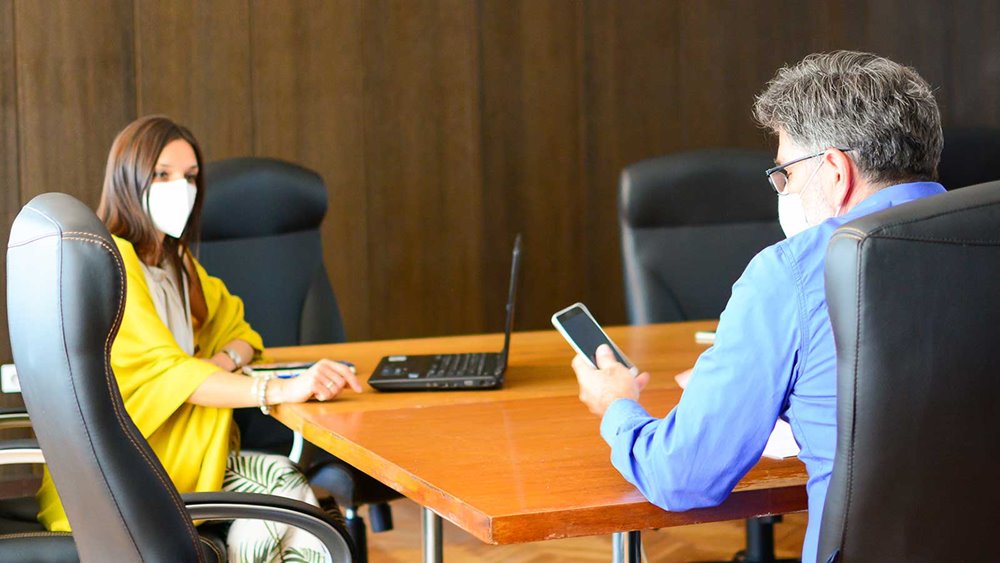Hybrid is happening: How does it change teamwork, again?

Julie Molnar | May 26, 2021
For a little more than a year, a large portion of office workers have been on equal ground. Individuals have been working from home on behalf of their respective organizations. Just when we finally seem to have figured out how to best work remotely, we’re now facing another shift in the office workplace dynamic. Hybrid work.
A hybrid-work model, one where employees work part of the week at home and part at the bricks-and-mortar office, gives organizations a new challenge. How to keep workers united when some team members are working in the office and others are working remotely on any given day.
Many companies report they are considering, or implementing, a hybrid model as their return-to-office strategy as it allows workers to still enjoy the benefits of remote work but still give employers the chance to also have people actively working in the office environment each day.
Adopting a hybrid work week, however, also means leaders will need to grapple with what a long-term decentralized office workforce will look like and how teams can best function for maximum efficiency.
So, how are executives preparing for this hybrid scenario? What are their main areas of concern and focus? Chances are, everyone is wondering what their peers are doing to address this return-to-office model.
Fostering connections across hybrid teams
According to a recent PwC report, 72 percent of executives are investing in tools for continued virtual collaboration. Another 70 percent indicated they are beefing up IT infrastructure to secure virtual connectivity. A close third, 64 percent, are offering enhanced manager training on how to oversee and operate for hybrid remote working.
When you shed the labels, the core of that training is about teamwork. This includes the delicate and intentional balance of managing for an optimal employee experience, no matter where a worker is located that day, while ensuring team and organizational goals are also met.
And, while plenty of adaptation will need to take place in a hybrid environment, the fundamentals of team development and success remain the same.
According to widely recognized research, “New Developments in Organization Development” published in the Training and Development Journal, four main areas of team development separate a team from a mere group of individuals working together:
- Goals and purpose, which need to be agreed on and committed to
- Clear and defined roles
- Effective processes such as meetings, problem-solving and decision-making protocols
- Interpersonal relationships, which are largely based on social interaction, are the foundation of it all
You can see where some elements of team development in a hybrid space might pose more challenges than others. To help managers better lead and connect with their hybrid teams, a good portion of any training should concentrate on creating well-defined processes and strong interpersonal relationships exist.
Here are a few tips on how to help managers accomplish that:
Define what trust and respect look like in action. When only a portion of team members are in a room together, and others are dialing in remotely, it’s crucial to clearly determine upfront how respect is shown to each other during meetings and one-on-one interactions. This could include determining that remote cameras must be on and that all on-site individuals must be forward-facing towards cameras and technology, for example. As you develop such expectations, invite employees into the conversation and work with them to define and develop your organization’s “rules of engagement” for both remote workers and those onsite.
Deal directly with conflict. Even with the best laid plans, communication breakdowns and misunderstanding among team members are bound to happen. Lead by example, dealing with these situations directly and honestly, using compassion and transparency. Handling team conflict in any other way erodes trust, another differentiator of a team versus a group.
Maximize in-person interactions. As best they can, managers should attempt to coordinate and schedule as many team members in the office as they can on any given day. Of course, they must factor in the safety and needs of employees. Face-to-face interaction, and the in-person development of professional relationships, will help maintain an organization’s culture which is another concern of many executives.
Keep caring. Return to work, in any form, doesn’t mean team members won’t continue to experience personal and professional challenges. In fact, as we emerge from our home offices back into traditional workspaces, we’re faced with more change. Acknowledging change is difficult. Encourage the honest sharing of these challenges among team members. Carve out time for these exchanges and support the dialogue by leading it when possible.
We all face a big learning in the months to come. Understanding some teamwork best practices is a great way to build a plan, including potential training, that keeps employees connected and successfully working while in different environments.
Julie Molnar
Julie Molnar is the Managing Director of Culture and Talent Marketing at Falls & Co. A marketing communication thought leader and organizational development specialist, Julie’s combined expertise in both fields uniquely positions her to address all aspects of an organization’s communications needs and the needs of its people. She has helped companies of all sizes transform people, performance and processes.


